We hope that each of you, our readers, will enjoy and appreciate this article we present about these 5 Vibrant Invertebrates of Vermont. It was certainly our pleasure to compile the information for you. May it provide you with both education and increased awareness.
These few species listed herein represent only a portion of the natural wonders found throughout the region, though. Yet, it’s our belief that they serve as excellent representations of the wonders found here. Check out some of our other articles for similar marvels.
Luna Moth
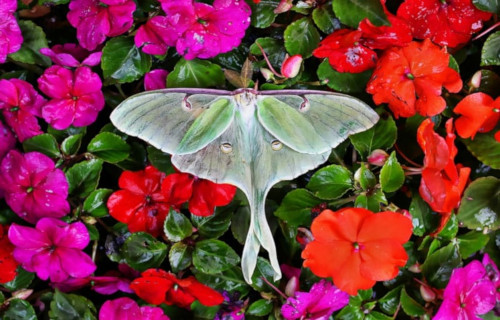
Luna Moth Facts
- Leading off this article about these 5 Vibrant Invertebrates of Vermont we present you the gorgeous creature known as the Luna Moth.
- This stunning variety of Lepidoptera bears the common name used herein. It also holds the comparatively short and simple scientific name, however, of the Actias luna. By either term, though, it represents a fabulous and fascinating creature.
- Like many of its kindred, it owes its scientific name to one of the best known of early researchers. In this case, that’s the renowned Swedish botanist and zoologist, Carl Linnaeus. He made the first official recognition of it as a separate species in 1758.
- That wasn’t its first discovery, however. In point of fact, it holds a place of moderate historical importance in the annals of science. That’s because of its earliest recognition. While Carl Linnaeus gave it its first formal recognition, it was first noted in 1700.
- That fact made it the first insect of its kind to be described in any way in scientific literature. It also holds yet another distinction, though. The invertebrate, in point of fact, easily ranks as one of the largest moths found anywhere in its native range.
- This magnificent Lepidoptera also holds yet another status in the local popular culture of a specific portion of its range. This occurs due to the fact that the arthropod appeared on a first-class postage stamp in the United States, issued in June 1987.
- For the moment, the Luna Moth appears to be maintaining a stable and sufficient population base. The IUCN, therefore, presently lists it as Least Concern. It nonetheless does face some threats. These include habitat loss and climate change.
Luna Moth Physical Description
Though not its only distinctive feature, the magnificent Luna Moth nonetheless does impress one due to its sheer size. In point of fact, it ranks as one of the largest of all Lepidoptera, in terms of wingspan. That size varies greatly among individuals, however.
The invertebrate further displays a slight degree the the physiological trait of sexual dimorphism. In its specific case, though, this has nothing to do with physical size. Instead, this manifests itself in the fact that the antennae of the male grow longer and wider.
Otherwise, the genders remain remarkably similar in appearance. Both sexes attain an average wingspan measuring roughly 4.5 in (11.4 cm). Some exceptional individuals, however, reach a span of as much as 7 in (17.8 cm). These giants truly distinguish themselves.
Regardless of their span, though, the wings of the breathtaking Luna Moth deserve appreciation for their mere appearance. That’s because of their striking and unique coloring. This consists of a bright lime-green background, offsetting the mainly white body.
The wings also display yet another distinctive characteristic. More precisely, the hindwings stand out. These features develop as highly elongated in shape. This remarkable evolutionary trait only serves to separate and distinguish the species from its brethren even more.
- Kingdom: Animalia
- Phylum: Euarthropoda
- Class: Insecta
- Order: Lepidoptera
- Family: Saturniidae
- Genus: Actias
- Species: A. luna
Luna Moth Distribution, Habitat, and Ecology
The visually unique and stunning Luna Moth, quite fortunately, has an advantage over many related creatures. That’s due to the fact that it inhabits a comparatively extensive range of the world. Yet at the same time, that habitat range qualifies as very specific.
In point of fact, it makes it evolved as native a very specific portion of the continent of North America. More precisely, it inhabits a large portion of the eastern half of the United States. This extends from Florida to Maine and a small portion of extreme northeast Canada.
Within this range, though, the magnificent Lepidoptera exhibits a relatively great degree of flexibility and adaptability in terms of habitat. As a result of this versatility, it inhabits various types of habitats, providing a sufficient number of certain types of plants are present.
Like most of its kind, the Luna Moth evolved as nocturnal in nature. Flying at night, females release powerful pheromones, to attract the males. These the males detect with their sensitive antennae. They can further do so from as great a distance as several miles.
Although adults do not feed for the duration of the life cycle, the larvae feed voraciously, typically on the same tree their cocoon was place on. It also feeds primarily on several varieties of broadleaf trees and is itself mainly preyed upon by bats and various birds.
Black Widow
Black Widow Facts
- Next up in this collection of 5 Vibrant Invertebrates of Vermont comes the world-renowned arachnid named the Black Widow.
- Perhaps most notably for most individuals, the amazing creature represents a very dangerous variety of spider. Placed in the Latrodectus genus, many of these reclusive arachnids are also known to some people simply as widow spiders.
- Experts also currently list 32 known species in this genus, spread throughout much of the world. The three species endemic to North America remain the most commonly known, though. Each of these arachnids shares many physical traits.
- The common name for these dangerous invertebrates derives from the high prevalence of sexual cannibalism in the Black Widow. After mating the larger female commonly, though not always, kills and then feeds on the smaller male.
- The toxin of its bite additionally remains considered by most experts to be especially dangerous. The invertebrate earns this distinction due to the presence of the neurotoxin latrotoxin. This represents an especially dangerous type of venom.
- Only the bite of the female typically presents any danger to humans, however. That’s because she generally has far larger venom glands than her much smaller male counterpart. Despite its reputation, though, few bites actually result in fatalities.
- Presently, the majority of species grouped under this common name continue to have stable populations. The IUCN, therefore, does not list them on its Red List. These amazing spiders nevertheless face the same threat from climate change as we all do.
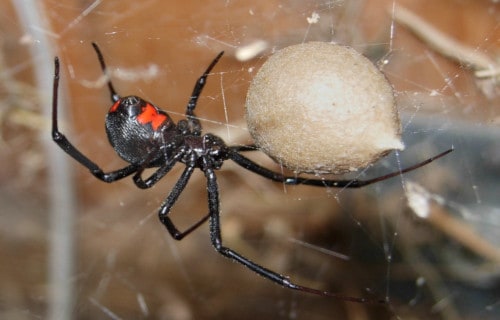
Black Widow Physical Description
Not surprisingly, the various species of Black Widow attain similar physical sizes. However, this remarkable arachnid typically displays a significant amount of sexual dimorphism. This physiological characteristic manifests itself in terms of both color patterns and size.
That’s partly because the female attains an average length of about 1.4 in (3.5 cm), whereas the male stays much smaller. He most commonly only reaches an average length of roughly 0.7 in (1.75 cm). The males also do not display the characteristic red hourglass.
Color patterns also vary relatively significantly between the various forms. All members of this genus, however, appear predominantly black in color. The females of each species, though, all display a very prominent red hourglass shape on their abdomens.
- Kingdom: Animalia
- Phylum: Arthropoda
- Class: Arachnida
- Order: Araneae
- Family: Theridiidae
- Genus: Latrodectus
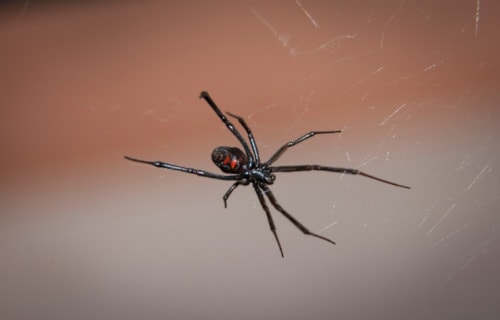
Black Widow Distribution, Habitat, and Ecology
The three species of Black Widow that evolved as native to North America remain the best known of the varieties. This incredible genus also thrives in many other areas of the world, though. In fact, the various species inhabit every continent of the world, except Antarctica.
Quite understandably, given its nearly global distribution, habitat types vary widely. Nevertheless, members of the genus most commonly live in temperate and tropical climates. A few of them, though, even live in extremely arid regions of the world.
Individuals usually build their webs in locations such as around rubble, small trees and bushes, in the wild. But, when found inside of human habitations, webs usually appear in isolated areas, such as attics and garages. This fortunately makes encounters rare.
When a human gets bitten, the venom of a Black Widow commonly causes a condition known as latrodectism. Experiences include profuse sweating, vomiting, muscle rigidity, and extreme pain. These symptoms typically persist for 3-6 days, but can last longer.
All currently known members of this genus hunt as ambush predators, laying in wait in the web. It feeds opportunistically, making a meal of any small creature caught in its web. Its diet, however, typically consists of mosquitoes, grasshoppers, beetles, and such.
Eastern Tiger Swallowtail
Eastern Tiger Swallowtail Facts
- Placing in the third spot of this gathering of 5 Vibrant Invertebrates of Vermont is the breathtaking insect named the Eastern Tiger Swallowtail.
- This breathtaking Lepidoptera most commonly goes by the somewhat informative common name that it does for excellent reasons. Surprisingly, this Arthropod has no other widely accepted general name. That sets it apart from many related species.
- Within certain circles, however, it’s better known by another moniker. That’s its official, technical name. In the annals of science, it holds the name of the Papilio glaucus. Fortunately for the layperson, that’s a much simpler term than most hold.
- The stunning insect received that name due to the efforts of the esteemed Swedish zoologist, Carl Linnaeus. He accomplished the first recorded recognition of it as a separate and distinct species. That scientifically noteworthy action occurred in 1758.
- Its great visual appeal further led to it holding a unique distinction. Within the region it inhabits, it’s been named the official state butterfly of five different states. More specifically still, this marvel’s also the formal state insect of yet another state.
- Thankfully, the gorgeous Eastern Tiger Swallowtail seems to be maintaining a population base that’s both sufficient and stable. That also appears to hold true throughout the entirety of its range. The IUCN, thus has no listing for it on its Red List.
- The remarkable creature nevertheless faces the same threats as most species, at least. Many of these occur directly due to the actions of man. Habitat degradation and loss pose a possible danger. It also faces the potential threat of ongoing climate change.
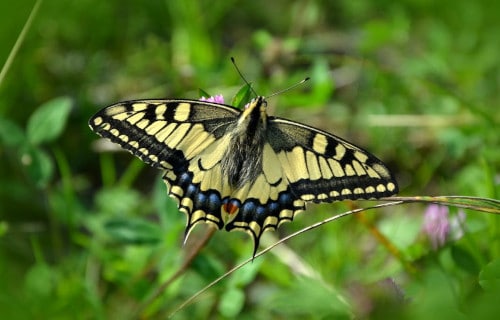
Eastern Tiger Swallowtail Physical Description
The magnificent Eastern Tiger Swallowtail immediately captivates those who encounter it. Unlike some of its relatives, though, it does so for several reasons. Is beauty alone would suffice to impress, to be certain. Yet this wonder of Nature also ranks as a large butterfly.
It does follow one pattern common among Lepidoptera, however. That’s because, like them, it displays a moderate degree of the physiological trait of sexual dimorphism. In its specific case, though, this natural characteristic manifests in both size and appearance.
Females of the beautiful species typically attain a slightly greater wingspan. Interestingly, this also varies according to region. This measurement thus depends greatly on the area in which the individual lives. Overall, however, this averages from 3.1 – 5.5 in (7.9 – 14 cm).
Individuals from the more northern part of its range tend to be smaller than their southern counterparts. This has no apparent impact on their coloring, though. The two sexes, do, however, disintinguish themselves here, too. And the females complicate things further.
Males of the Eastern Tiger Swallowtail present predominantly bright yellow wings. Four black stripes also appear on each forewing. The outer edge also shows black, with a series of yellow dots. The hindwing shows a mixture of yellow, red, and blue spots in various places.
Yet the females show two separate distinct patterns. Some present a primarily dark gray or black background across both wings. Others displays a mainly yellow background, like the males. Faint blue areas also appear on the hindwings, and a row of orange spots.
- Kingdom: Animalia
- Phylum: Arthropoda
- Class: Insecta
- Order: Lepidoptera
- Family: Papilionidae
- Genus: Papilio
- Species: P. glaucus
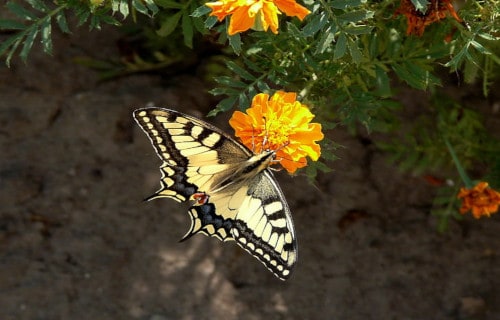
Eastern Tiger Swallowtail Distribution, Habitat, and Ecology
The visual splendor that is the Eastern Tiger Swallowtail evolved as native to a limited region of the world. That area, however, is one that likely won’t surprise many people. That’s true since this marvel of Nature evolved as native to a specific portion of North America.
Even there, though, its range is limited. It only lives within the boundaries of the United States. As its name indicates, it further lives only in the eastern part of the country. That range extends south from Vermont to Florida, and west to Texas and the plains.
This lovely Arthropod evolved as comparatively adaptible in terms of habitat requirements. Within its range, it makes its home anywhere deciduous forests appear. This includes such locations as fields, woodlands, creeks, rivers, roadsides, and gardens.
Yet this fabulous creation of evolution doesn’t stop there in its habitation practices. That’s because it does not hesitate to venture into regions of densely concentrated human populations. Due to this, it’s a common sight in city parks, private yards and gardens, as well.
The Eastern Tiger Swallowtail evolved as diurnal in its behavioral patterns. Most adults live largely solitary lives. Individuals generally fly above the tree canopy, unless descending to feed. Males also seek females by patrolling concentrations of potential food plants.
The adults also use a wide range of food sources. Intriguingly, though, they show a strong preference for the nectar from flowers that are either pink or red in color. Daisies and various legumes are popular choices, though they do not actively seem to discriminate.
Eastern Cicada Killer
Eastern Cicada Killer Facts
- Our next choice for inclusion in this compendium of 5 Vibrant Invertebrates of Vermont bears the informative title of the Eastern Cicada Killer.
- This impressive creation of evolution most frequently goes by the somewhat deceptive common name due to its nature and range. The insect does have several other, less often used names, though. These include cicada hawk and cicada killer.
- Within scientific circles, however, it’s generally referred to by its technical title. Unfortunately, though, that’s a slightly difficult term to pronounce for the layperson. That’s because this fabulous Arthropod bears the official name of Sphecius speciosus.
- It received that tongue-twisting moniker due to the efforts of the British entomologist, Dru Drury. He accomplished the first acknowledgement of it as a separate and distinct species. The researcher managed this scientifically noteworthy deed in the year 1773.
- Though intriguing, the name remains somewhat confusing. That’s due to the fact that the same term’s frequently applied to a number of different species with its feeding habits. They’re also occasionally referred to as sand hornets, though not hornets.
- Luckily, the Eastern Cicada Killer appears to be maintaining a population base that’s both stable and sufficient. That fortunate trend further seems to hold true throughout the entirety of its range. The IUCN, therefore, has no listing for it on the Red List.
- Nevertheless, this wonder of Nature must be considered to be facing at least some potential threats to its existence as a species. Habitat degradation and outright loss pose potential dangers. Its greatest threat, though, likely consists of climate change.
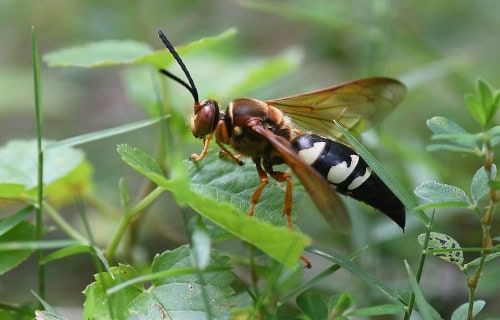
Eastern Cicada Killer Physical Description
The fascinating Eastern Cicada Killer quickly gains the appreciation of those who respect Nature. Unlike some species, however, it does so for several reasons. In its case, this occurs due to a combination of both its visual appeal and its sheer physical measurements.
Like many insects, it additionally displays a certain degree of the physiological characteristic of sexual dimorphism. In its specific situation, though, this trait manifests itself in terms of pure size. More precisely, females attain a larger average size than their male counterparts.
Both genders, though, vary significantly in body length, due to various local environmental factors. Overall, however, mature adults reach average total lengths ranging from 0.6 – 2 in (1.5 – 5 cm). Although rare, exceptional individuals sometimes exceed this length.
Otherwise, specimens of both sexes remain virtually indistinguishable to untrained observers. The general form is often described as robust, though elongated, as most of its kind. Its general appearance, in fact, resembles several species of yellowjacket and hornet.
The head of the Eastern Cicada Killer develops as comparatively large in relation to body size. Its eyes also attain a relatively large size for its kind. The long, jointed legs generally display a bright orange-yellow shade. The wings, meanwhile, show a light or dark brown hue.
It’s the body of this distinctive Hymenoptera that mosts catches the eye, though. The thorax, or middle section, shows reddish and black colors, along with a covering of dense hairs. It abdomen, however, manifests a black background, along with bright yellow stripes.
- Kingdom: Insecta
- Phylum: Arthropoda
- Class: Insecta
- Order: Hymenoptera
- Family: Crabronidae
- Genus: Sphecius
- Species: S. speciosus
Eastern Cicada Killer Distribution, Habitat, and Ecology
The impressive Eastern Cicada Killer evolved as native to a moderately broad swathe of the world. That’s also a region of the globe well known for its abundance of natural marvels. That’s true since it evolved as endemic to a portion of the continent of North America.
That’s where the mild deceptiveness of its name comes into play, though. It’s true that the invertebrate appears in the eastern sections of the United States, to be sure. Yet, it also lives in the midwest part of the country, in addition to Mexico and parts of Central America.
This intrepid creation of evolution developed as highly versatile and adaptible in its choice of habitat, too. That’s a large aid in its survival. Within its native range, the insect makes its home in a wide range of locations. This even includes around areas of human habitation.
It makes its home by burrowing into the ground, to construct a nest. To do so, it merely requires the soil to be well-drained, preferably sandy or loose clay in composition. It often appears in areas of grass-covered banks and hills, and next to raised sidewalks and patios.
The Eastern Cicada Killer evolved as solitary in nature, unlike more eusocial species. Adults emerge in summer, usually late June or early July. These typically feed on a wide variety of flowers for their nectar, as well as the sweet sap of various locally available plants.
Males tend to be quite aggressive towards each other, establishing breeding dominance. To humans, though, they pose no dange, since they have no stinger. Only females possess this appendage, using it to stun their prey. Their main food consists of cicadas, thus the name.
June Bug
June Bug Facts
- Finishing up this article about these 5 Vibrant Invertebrates of Vermont comes the fascinating insect known as the June Bug.
- This intriguing product of Nature and evolution most frequently goes by the appropriate common name we’ve used here. Yet it’s sometimes known by similar variations of this term. These include such titles as June Beetle and Green June Beetle.
- Among entomologists, however, it’s better known by its technical name. Fortunately for the interested layperson, that’s a relatively simple term, as such things go. That’s because this wonder of creation bears the formal name of Cotinis nitida.
- It received that reasonably simple technical name due to the efforts of Carl Linnaeus. The eminent Swedish zoologist and botanist accomplished the first recorded recognition of it as a separate and distinct species. He achieved that recognition in 1758.
- Regardless of the term one chooses to use, it remains a very fascinating insect. Unfortunately, though, it’s considered something of a destructive species. It’s also sometimes confused with another, related invertebrate that lives within the same range.
- Within its native territory, the June Bug appears to be maintaining a population base that’s both stable and sufficient. That situation further seems to hold true throughout the entirety of that range. The IUCN, therefore, currently does not list it on the Red List.
- The insect nevertheless does face the same potential threats as most other creatures. Most of them stem from the actions of man. These include such dangers as habtitat degradation and loss. It also now faces the perils posed by ongoing climate change.
June Bug Physical Description
The appealing June Bug is a variety of invertebrate that captures the attention of many people within its range of habitation. It’s usually of more interest for its sheer visual appeal, than simple physical size. That’s because the insect ranks as an average-sized beetle.
Unlike many of its relatives, though, it displays no noticeable degree of sexual dimorphism. Due to the lack of this physiological characteristic, adults of both genders remain virtually indistinguishable to the untrained eye. Yet what they does see merits appreciation.
Mature adults attain a total body length averaging from 0.6 – 0.9 in (15 – 22 mm). Exceptional individuals, however, sometimes measure up to 1.06 in (27 mm) in length. The body of the Arthropod also reaches an average width of approximately 0.5 in (12 mm).
It’s the exoskeleton of the aptly-titled June Bug, though, that usually gets the most attention. That’s due to the vibrant color scheme generally presented by fully mature adults. This background most commonly develops as an almost uniformly bright metallic green.
Nevertheless, a percentage of specimens present a very different appearance. Some individuals manifest a primarily dull brown background. In these cases, that’s typically accompanied by thin green stripes. The margins of the forewings also show orange yellow.
- Kingdom: Animalia
- Phylum: Arthropoda
- Class: Insecta
- Order: Coleoptera
- Family: Scarabaeidae
- Genus: Cotinis
- Species: C. nitida
June Bug Distribution, Habitat, and Ecology
The intriguing June Bug evolved as native to a somewhat small expanse of the globe. The location of that zone of habitation, though, won’t surprise many people. That’s true since it developed in a region of the world already known for its wide variety of insect life.
More precisely, it developed as endemic to the continent of North America. Even there, however, the small animal makes its home in only a specifc portion of it. The vast majority of its population appears in the east and midwest portions of the United States.
There, it lives from Florida in the southeast, to Texas in the west. Northward, though, this territory extends up into the midwest as far as Nebraska. In the far northeastern region, the natural marvel appears as far north as the southeastern portions of the country of Canada.
In all portions of that native range it displays the same preferences in where it makes its home. These, however, include a wide variety of ecosystems. Individuals often appear, sometimes in numbers, flying close to the ground. They prefer fields, lawns, and forests.
After mating, the female June Bug lays 60 – 75 eggs underground. These subsequently hatch after about 18 days, into the larval form. They mainly feed on mold and humus, but in numbers can severely damage plants and even lawns. Thus they’re considered pests.
The adults of the species typically finally appear in June, thus the name. These mainly feed on a variety of fruits. That includes grapes, peaches, berries, apples, nectarines, figs, and pears. Its own natural predators are quite numerous, including birds, especially blue jays.

5 Vibrant Invertebrates of Vermont
We hope that each of you enjoyed reading, and hopefully learning from, this article we’ve written about these 5 Vibrant Invertebrates of Vermont. It’s also our hope that doing so has left you with either a new or renewed appreciation for such wonders of Nature.
Unfortunately, however, many of their kindred around the world now find themselves facing strong threats to their continued existence as a species. Many of those dangers, in fact, stem from the actions of mankind. We must do all we can to protect and preserve them all.
Check out our other articles on 5 Fabulous Mammals of Florida, Madagascar’s Astounding Inhabitants, 10 Dazzling Denizens of the Depths, Earth’s Many Stunning Waterfalls
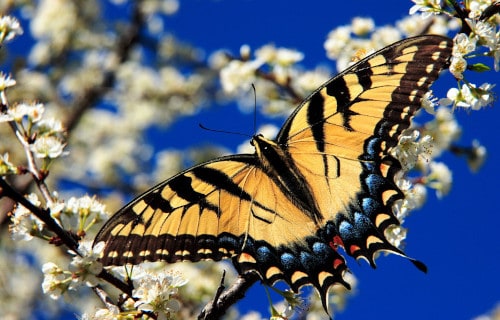
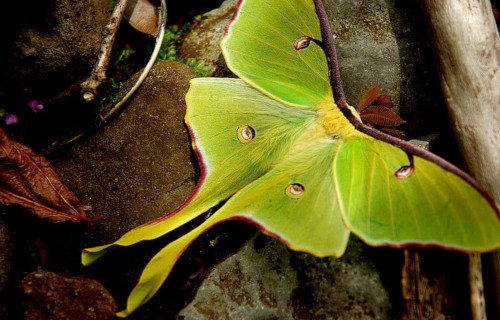
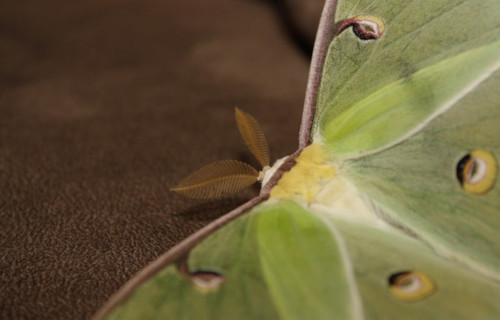
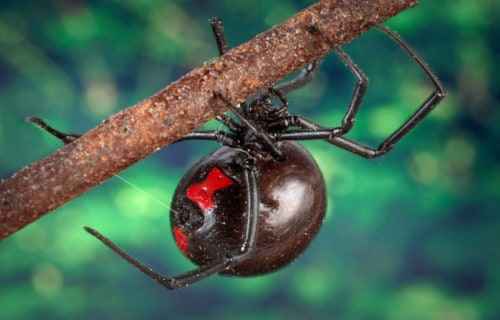
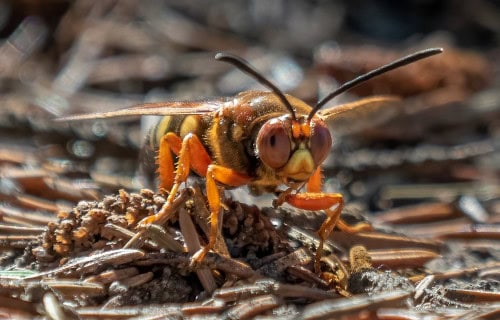
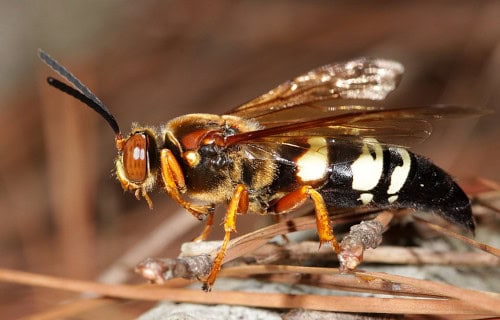
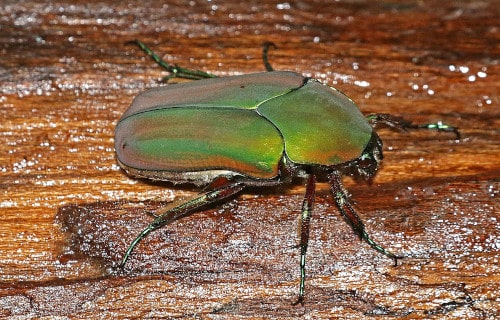
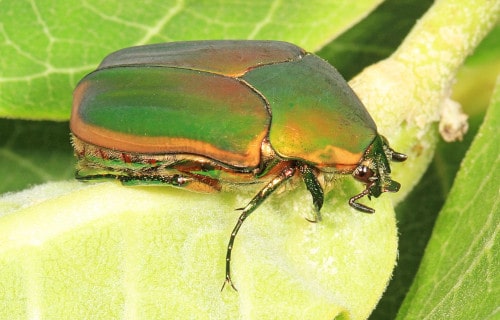
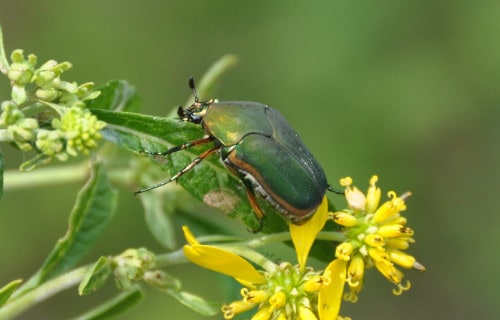









Leave a Reply